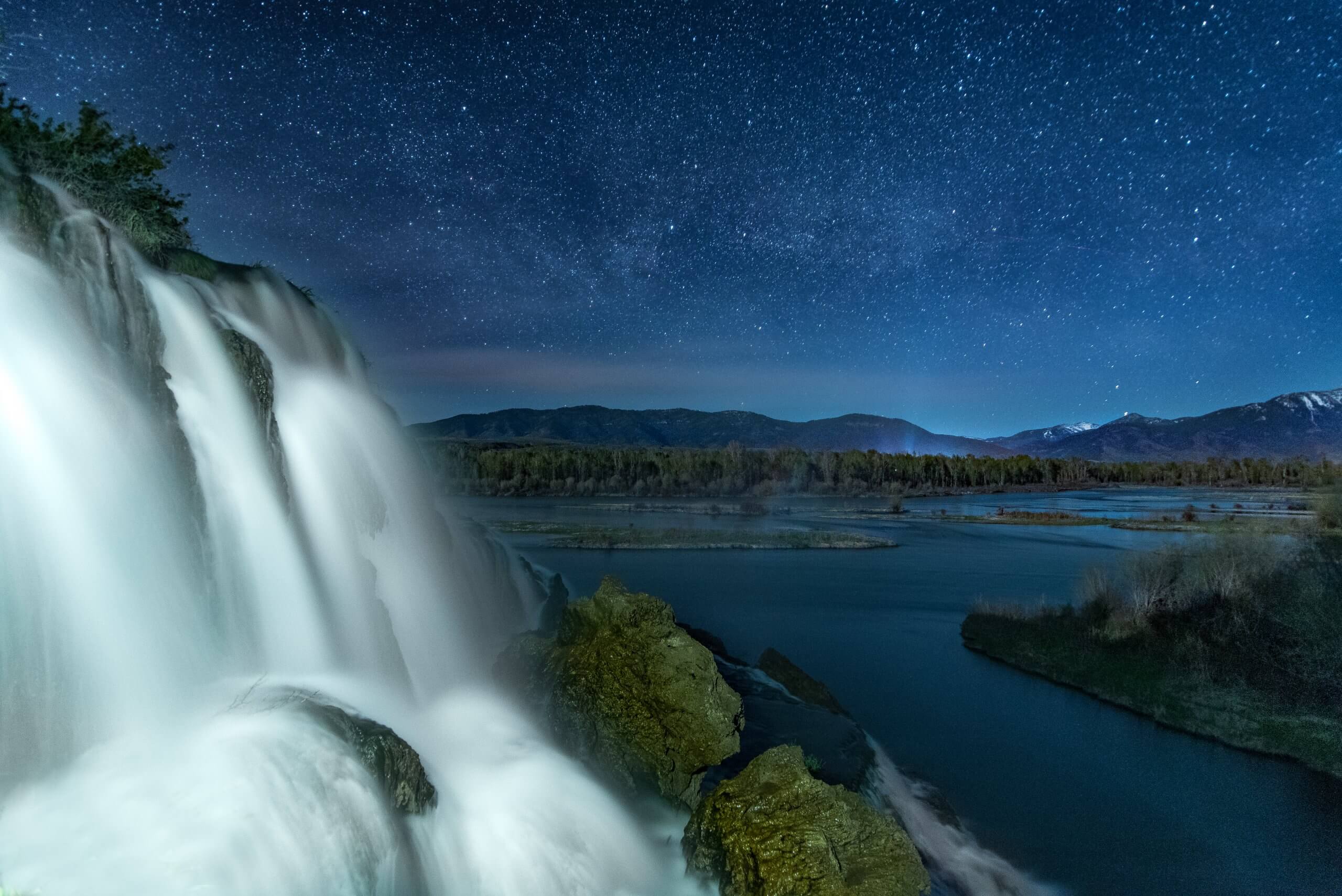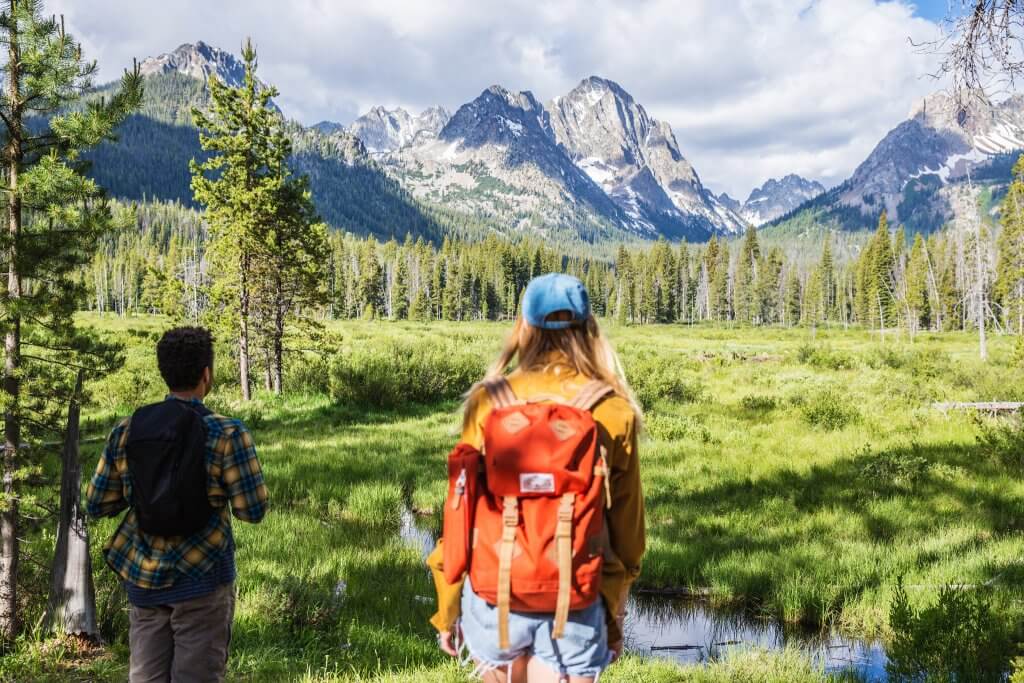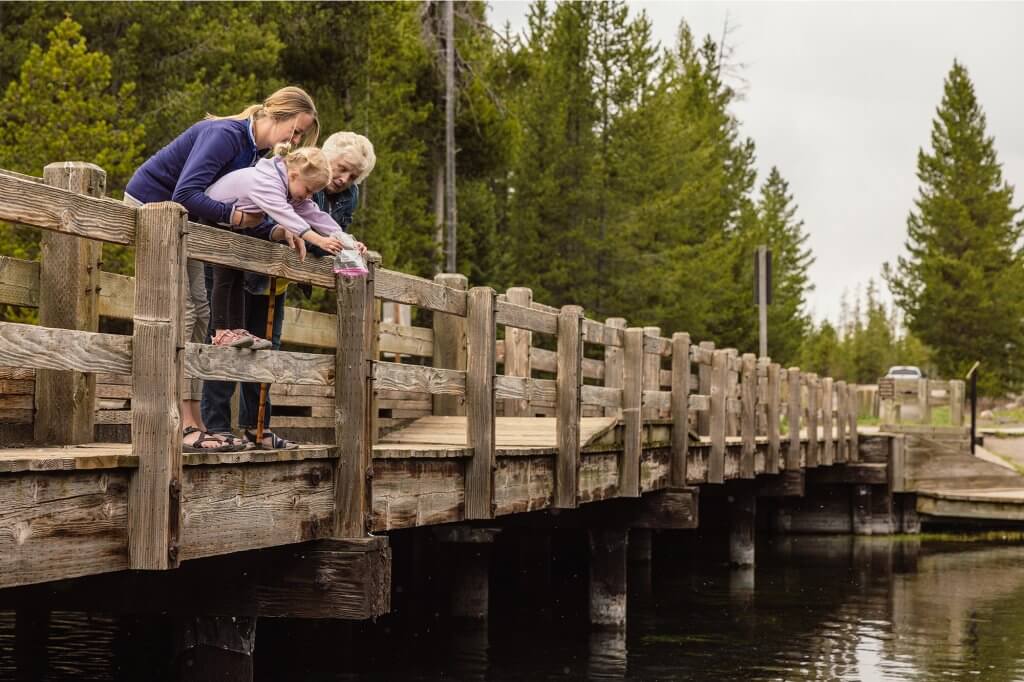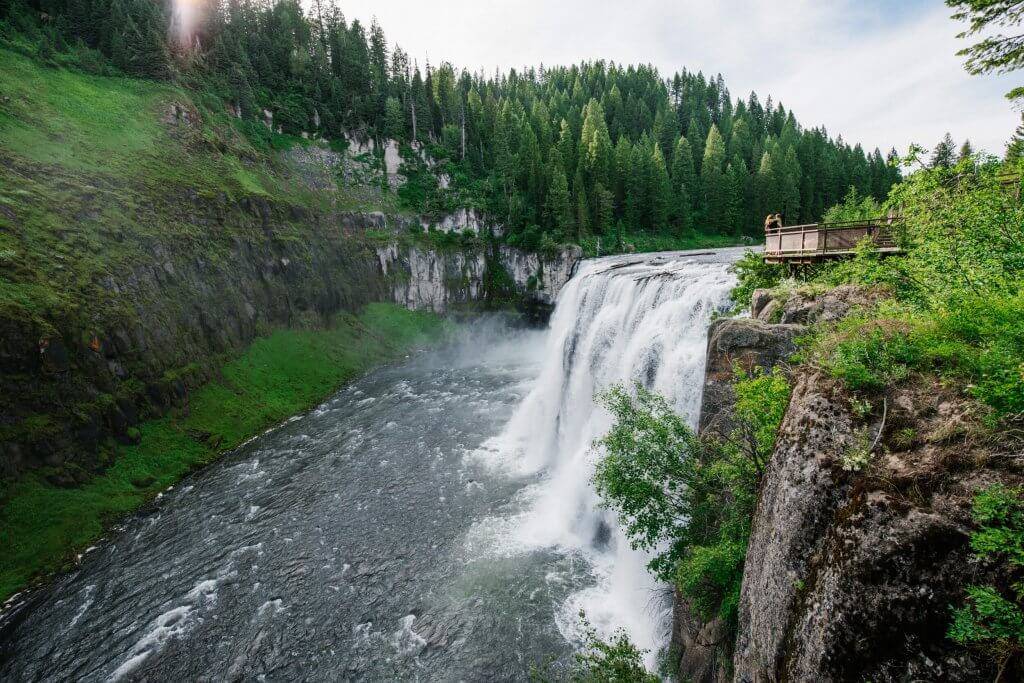This is a sponsored post.
One of Idaho’s greatest features has to be its awe-inspiring night sky. The twinkling stars and the Milky Way will take your breath away and Idaho’s lack of light pollution means you’re in a great spot to capture a gorgeous starry night. Here are three awesome Idaho locations to begin your star search.
Getting Started -How to Photograph the Milky Way: Be aware of the moon phase, because a bright moon makes it nearly impossible to photograph the Milky Way. On the camera lens, turn your focus from auto to manual focus as the camera can’t autofocus in the dark. Make sure your camera has the ability to focus to infinity to ensure the entire image will be sharp. Then use the following camera settings as a baseline. Open your aperture to between f/1.8 and f/4.0. Crank up your ISO so it’s around ISO 3200 to ISO 8000 – too high of an ISO will cause your photo to be grainy. Depending on the aperture that you are using, choose a shutter speed between 20 to 30 seconds. Using a shutter speed longer than that will likely result in a blurring of the stars or the beginning of star trails. These are the basics to get you going. Try them out and see what you get. Then tinker with the camera settings to get things looking the way you want.
Here are three places you can go to get away from the city lights and enjoy the natural lights in the Idaho sky:
-
Craters of the Moon National Monument and Preserve
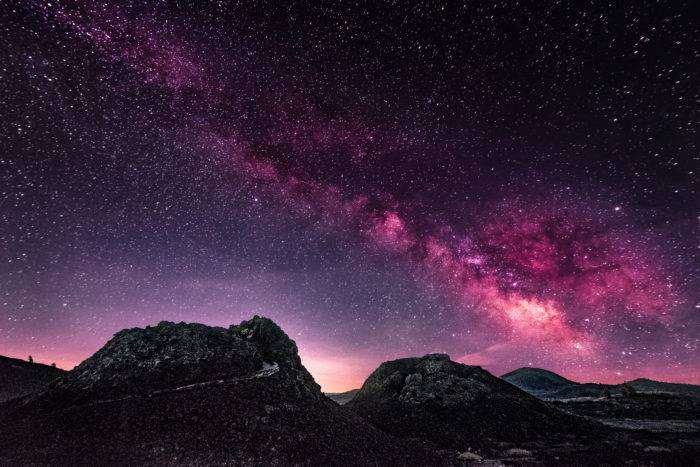
Craters of the Moon is one of the most unique landscapes in America. You almost feel like you’re on another planet with black rocks and moon-like terrain. Craters of the Moon has no light pollution, making it a perfect spot for gorgeous night photography. Be mindful to stay on the trails here, because it’s very dark, making it easy to slip and sprain an ankle. The Spatter Cones, located inside Craters of the Moon, make for an interesting and unique subject with the night sky. To capture both the night sky and Spatter Cones, take two differently exposed photos. A shorter one for the night sky and a longer one for the foreground and blend the two images in some photo editing software.
-
Fall Creek Falls
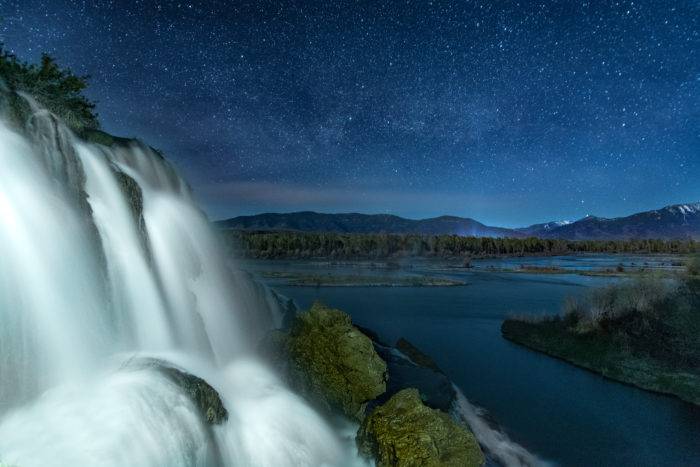
Fall Creek Falls is an awesome waterfall on the Snake River in Swan Valley. The core of the Milky Way is not an option to photograph here, so photographing the stars would be your best bet. You can use the moonlight to light up the Snake River and then use a flashlight to light paint the waterfall in the foreground. Light painting uses a light source to illuminate your photography subject during a long exposure photo. You can use a shorter shutter speed and lower ISO here since you’re photographing the stars and not the Milky Way. Tinker with the camera settings until you are satisfied with the shot.
-
Swan Valley
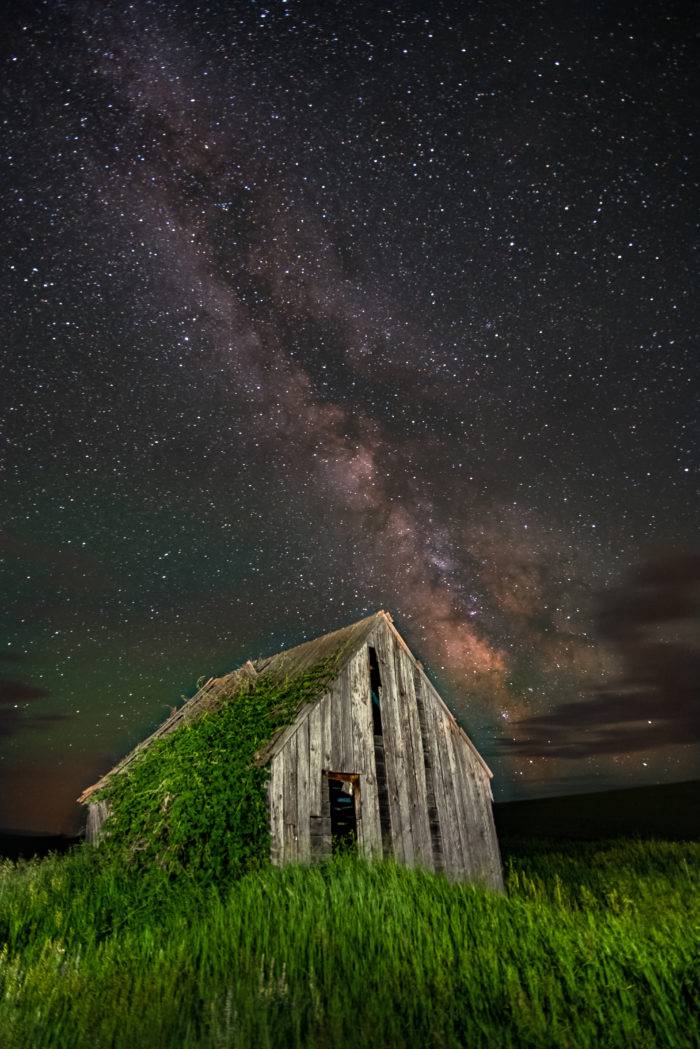
Located just outside of Swan Valley are a couple of old buildings that make for great nightscape shots. You’ll find an old school house and homestead within a short distance of each other along Highway 31. If you time it right, you can use a passing car’s headlights to light paint the buildings. If you don’t want to wait for a passing car, you can light paint with a flashlight as you can see in the homestead photo above. Make sure not to shine the flashlight directly on the building, because you’ll lose detail since it’s so bright.
All photos, including feature image, are credited to Josh Packer.
Josh Packer is a full-time CPA who is obsessed with landscape photography and exploring Idaho. He lives in Ammon with his wife and three boys. Find more from Josh on Facebook, Instagram and on the web.
Published on September 27, 2016

